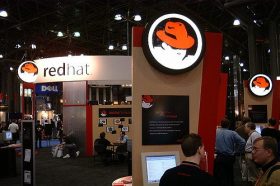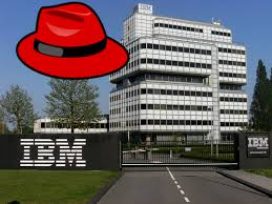RedHat OpenStack 12 Embraces Containers

Red Hat at the OpenStack Summit conference this week announced Red Hat OpenStack Platform 12, an instance of Red Hat OpenStack based on Linux containers.
Red Hat officials say that OpenStack Platform 12 is designed to make OpenStack easier to consume, by enabling organizations to create what Red Hat is describes as a "composable networks," based on Linux containers. Container technology enables applications to be distributed in the cloud regardless of the operating systems being used -- and it allows the networks on which they connect to be easily adapted.
Previously, organizations employing OpenStack had to choose a pre-defined network topology. Now organizations can select multiple network topologies, including the popular L3 spine and leaf topology, and they are no longer limited in terms of the number of networks they want to employ.
Supporting NFV with OpenStack
Based on the Pike release of OpenStack delivered last August, Radhesh Balakrishnan, general manager for OpenStack at Red Hat, says the latest release of Red Hat OpenStack platform will make it easier for organizations to mix and match components as they see fit. In keeping with that concept, Juniper Networks also announced that it will use elements of Red Hat OpenStack Platform 12 to create a cloud management platform that makes use of its implementation of the Contrail software-defined networking (SDN) platform.
The latest version of the Red Hat distribution of OpenStack also continues to provide a preview edition of OpenDaylight, an open source SDN platform, available. Red Hat says this is core to the company’s plans to support network function virtualization (NFV) software.
Balakrishnan says Red Hat OpenStack Platform 12 is another signal that the world of containers and virtual machines are continuing to converge.
“This time we’re talking about the containerization of OpenStack itself,” says Balakrishnan.
Balakrishnan says Red Hat envisions a world where virtual machines that support OpenStack will host the company’s OpenShift platform-as-a-service (PaaS) environment, which is based on the Kubernetes container orchestration engine originally developed by Google.
Will Containers Merge with PAAS?
While enterprise IT organizations that have a lot of legacy applications to support may appreciate Red Hat's approach, there is also a whole body of developers building cloud-native applications that run directly on top of a container-as-a-service (CaaS) environment.
Red Hat is making a case that PaaS and CaaS environment will soon converge. But much of the Kubernetes community is throwing its weight behind CaaS environments that can be deployed on top of virtual machines on premise or in the cloud, or directly on bare metal servers. It’s too early to say how that platform war will play out.
One thing that is clear: Organizations of all sizes now have a wider variety of approaches to use containers and adopt different network topologies to support applications.




